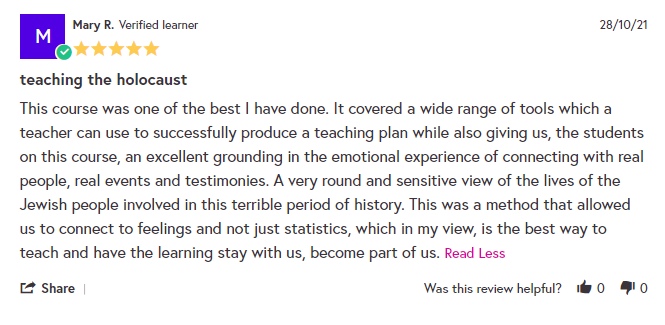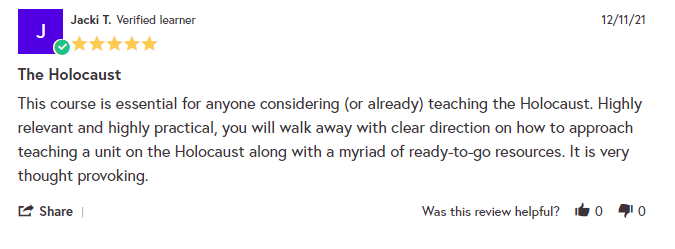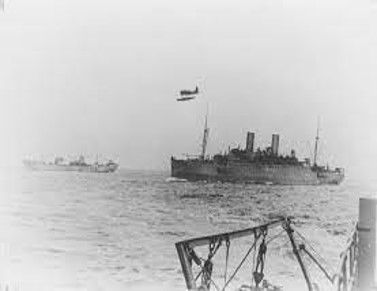
This week we draw our second run of the #MOOC to a close, & would like to take some time to reflect on some of the successes.
Firstly, we were delighted at the international reach of the MOOC & being able to network with teachers from every inhabited continent! 1/5 RT @soper_mr
Firstly, we were delighted at the international reach of the MOOC & being able to network with teachers from every inhabited continent! 1/5 RT @soper_mr

We have now had over 3,415 teachers from across the world as participants on the #MOOC, in partnership with @yadvashem! We are so pleased that the Centre’s research & resources has been able to reach such a huge number of teachers in the #globalclassroom 2/5 RT 

Centre staff @hmccord78 & @soper_mr joined @yadvashem colleagues @Sandrachinos & Asaf to teach on the course, joining lively conversations on fundamental questions of Holocaust history & pedagogy. 3/5 RT 

In this run of the course, we included new steps addressing the issues teachers faced with rising #antisemitism, sharing resources & approaches to support this. It was powerful to hear from teachers across the planet about their commitment to combat antisemitism in education. 4/5 

Lastly, we were most delighted to read the positive feedback & reviews from participants, who stressed the impact of the learning & resources on their classroom practice. You can read them here: futurelearn.com/courses/holoca… 5/5 RT @FutureLearn 







• • •
Missing some Tweet in this thread? You can try to
force a refresh





